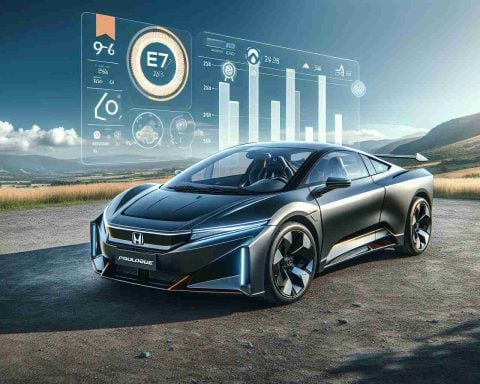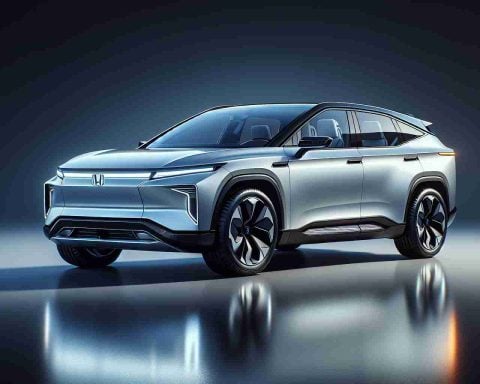- The proposed elimination of a $7,500 tax credit for electric vehicles (EVs) in the U.S. could significantly impact their affordability and accessibility.
- Elon Musk supports a market free of government subsidies, anticipating less competition and a stronger position for Tesla without them.
- The automotive industry’s economic challenges are compounded by ongoing trade tensions and potential new tariffs.
- Volvo’s plan for full EV production by 2030 faces setbacks due to financial struggles and stock market losses.
- Trade tariffs could increase car prices, placing pressure on manufacturers to either relocate production, absorb costs, or transfer them to consumers.
- Volvo’s EX30 faces delays in its U.S. launch due to high tariffs, complicating its production and pricing strategy.
The electric car dream in the U.S. faces a jolt as pivotal tax credits may be unplugged, potentially rendering electric vehicles a luxury beyond reach for many. Experts voice concerns about the proposed elimination of a $7,500 tax credit that has sparked new EV purchases, forewarning that it could throttle accessibility, transforming the EV landscape overnight. Yet, amidst this upheaval, Elon Musk, the mercurial CEO of Tesla, stands unfazed. His consistent stance champions a world free of government subsidies, even though they benefit Tesla directly. Musk envisions competition as the real casualty, projecting a brighter future for Tesla if rivals flounder under subsidy removal.
But zoom out, and the vista darkens. The automotive industry, still reeling from trade tensions ignited by previous administration policies, braces for compounded economic strife. Volvo CEO Jim Rowan issues a stark warning: the path to 2025 appears perilous. Their ambitious leap to full EV production by 2030 has hit a pause, profits flounder, and the stock nosedives. The added specter of trade tariffs ratchets up the stakes, potentially inflating car prices and pressing manufacturers to shift costs onto consumers.
As Volvo’s EX30 eyes the American market, it’s already ensnared in a web of hefty tariffs, delaying its U.S. debut. Slated for production in Belgium, this European favorite grapples with a future tangled in uncertainty. The looming trade policies threaten to elevate prices, forcing manufacturers into a costly calculus: transfer production, absorb costs, or pass them along. Preparing for a future amid dynamic tariffs isn’t just complex; it’s driving up the stakes and costs in the race toward a sustainable automotive future.
The Electric Vehicle Tax Credit Shake-Up: What It Means for Consumers and the Auto Industry
Understanding the Electric Vehicle Tax Credit
The U.S. government’s $7,500 electric vehicle (EV) tax credit has been a pivotal factor in encouraging the adoption of electric cars. Its potential removal poses significant implications for consumers and the auto industry. This credit is designed to make EVs more affordable by reducing the overall cost, making them appealing to a broader range of consumers.
How-To Steps & Life Hacks: Maximizing EV Cost Efficiency
1. Evaluate Total Cost of Ownership (TCO): When considering an EV, factor in not just the purchase price, but also savings on fuel, maintenance, and potential government incentives.
2. Leverage State Incentives: Many states offer additional incentives, such as rebates or tax credits. Check your state’s program to maximize savings.
3. Consider Used EVs: With the potential removal of federal tax credits, buying a used EV can be a budget-friendly option. Depreciation can make these vehicles more affordable.
4. Utilize Public Charging Options: Reduce energy costs by identifying free or less expensive public charging stations.
Real-World Use Cases: EVs in Everyday Life
Despite challenges, EVs continue to offer significant benefits in urban environments. They provide an eco-friendly alternative to traditional cars, reducing emissions and reliance on fossil fuels. EVs are ideal for city dwellers due to their compact design and popularity of charging infrastructure in urban areas.
Market Forecasts & Industry Trends
The Future of EVs: According to the International Energy Agency (IEA), EV sales are set to grow exponentially worldwide, despite challenges like the potential loss of tax credits. Automakers are predicted to push forward with electrification plans due to climate goals and consumer demand.
Reviews & Comparisons
Comparing EV Models: When shopping for an EV, consider factors such as range, charging speed, and features:
– Tesla Model 3 is often favored for its range and technology.
– Chevrolet Bolt EV offers affordability and good range for its price.
– Nissan Leaf is known for being user-friendly and cost-effective.
Controversies & Limitations
The Role of Government Subsidies: Critics argue that subsidies distort the market, while proponents claim they are essential for supporting emerging technologies against entrenched players. The removal of tax credits could slow down EV adoption and impact the industry’s growth trajectory.
Features, Specs & Pricing
EVs often boast advanced features like autonomous driving capabilities, over-the-air updates, and integrated smart home technology. Prices vary widely, from budget-friendly options under $30,000 to luxury models surpassing $100,000.
Security & Sustainability
Sustainable Manufacturing: EVs are generally more sustainable over their lifetime compared to internal combustion engine vehicles, despite higher initial manufacturing emissions. Automakers are investing in greener production practices to enhance sustainability.
Insights & Predictions
Without tax credits, automakers might introduce cost-cutting measures or innovative financing options to maintain market competitiveness. The focus may shift towards enhancing value through technology and services.
Tutorials & Compatibility
Ensure compatibility with charging infrastructure by checking the type of charger and plug your vehicle requires. Utilize apps like PlugShare to locate compatible charging stations.
Pros & Cons Overview
Pros:
– Reduced environmental impact
– Lower maintenance costs
– Innovative technology
Cons:
– Higher upfront cost
– Limited charging infrastructure in rural areas
– Longer refueling times compared to gas vehicles
Actionable Recommendations
– Stay Informed: Keep abreast of local and federal policy changes that may affect your potential EV purchase.
– Compare Offers: Before purchasing, compare different EVs and offers to ensure you get the best deal.
– Plan Charging Infrastructure: Assess your access to charging stations at home and in frequently visited areas.
For more information on the evolving auto market and EVs, visit Tesla, Chevrolet, and Nissan.


















